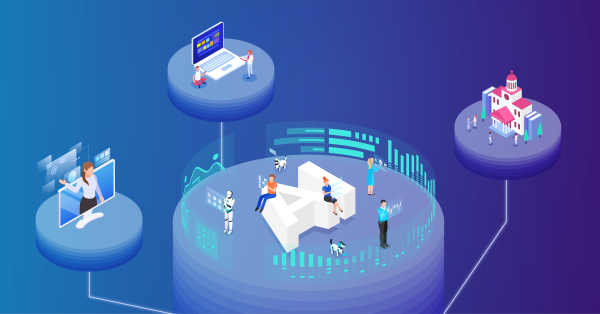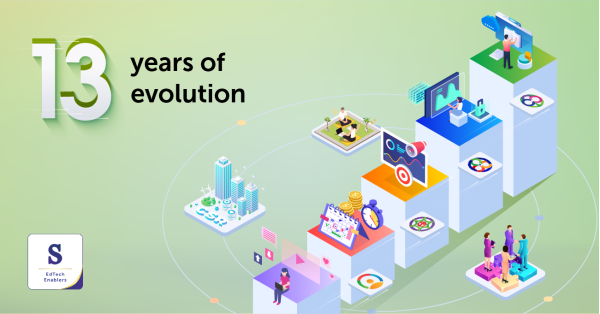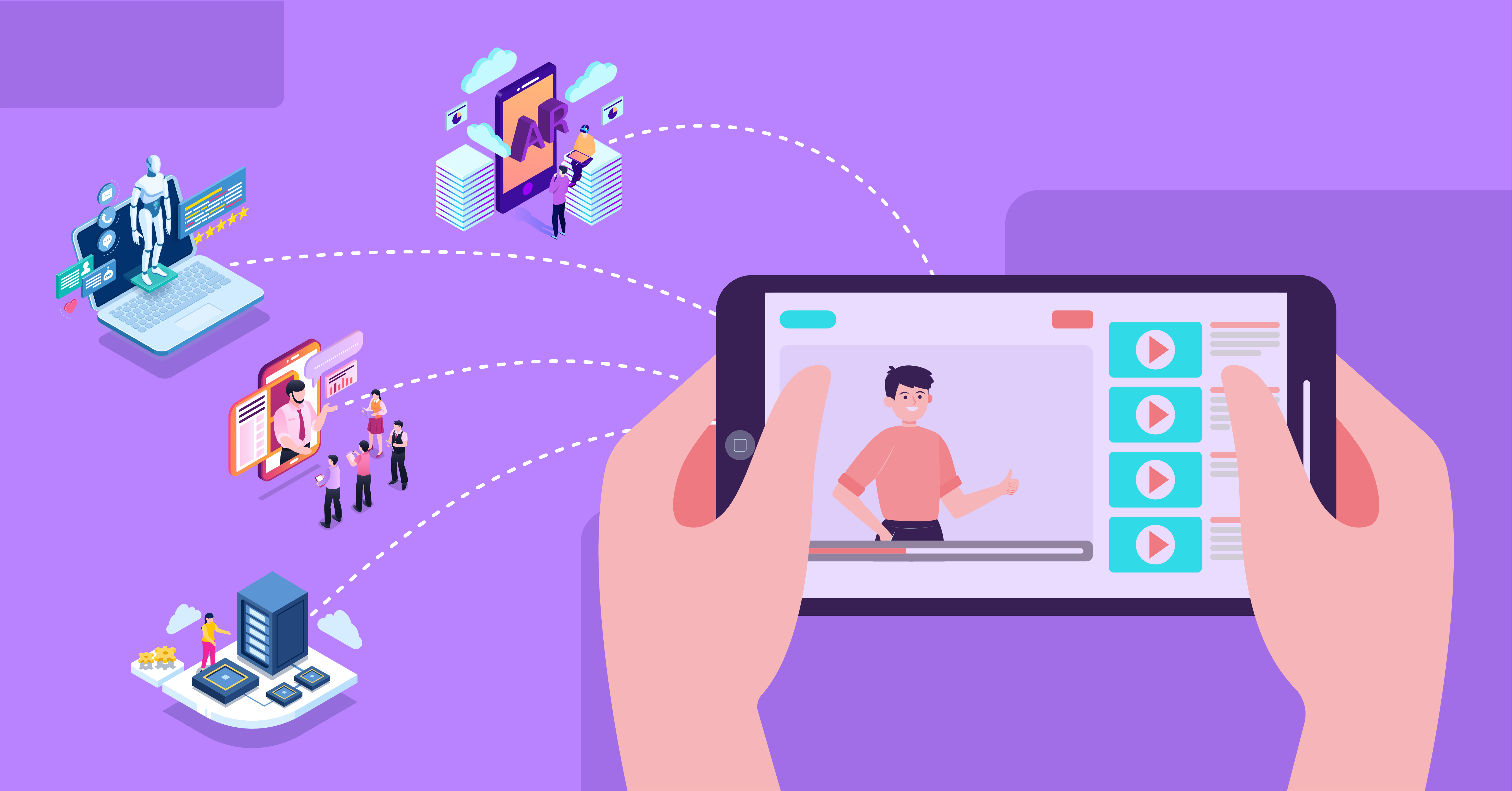
The word “EdTech” has become a buzzword, with an ever-expanding growth forecast; its market size is valued at USD 245.80 billion in 2021 and is expected to reach up to USD 605 billion by 2027 and 1.5 trillion by 2030. “EdTech” is the word that has become mindshare when companies to learners think about education. Yet, there is so much more that we do not know about.
Hence the question, What Is EdTech? Can we consider putting technology into education as EdTech? Or is putting academics (methodologies and techniques) into technology the definition of EdTech?
Historically, the first inception of EdTech was introduced since the usage of slide projectors in the early 1900s. The core concept of technology has changed drastically since the advent of portable computers. It is now widely accepted that EdTech is the practice of utilising Information Technology in a classroom or academic setting to create a more engaging, personalised, comprehensive learning experience.
Therefore, EdTech can be construed as using a sphere of technology devoted to the utilisation of software, hardware and processes to facilitate enhanced learning outcomes in the field of education.
What does it essentially mean?
Our classrooms of today can be anywhere, the dining table, or a cafe table, via the usage of technology hardware (the laptops/tablets/mobile phones) that are connected to the internet where lessons can be conducted via video conferencing or pre-recorded classes can be streamed via data.
The uptake of a virtual/digital learning environment and its current form has been scapegoated by the recent pandemic. During the midst of pandemic-stricken fear, many decided to let go of the rigid academic schedules, hardcopy printed notes and physical textbooks for a more “sterile” or “safer” environment to study in.
Whilst waiting for the pandemic/endemic to settle down, learners have opted for virtual learning, assessments and lessons that they can consume without the requirement to attend a physical classroom with the presence of other people. Academic institutions have always been incorporating technology since before the pandemic, but we have seen that now larger institutions to corporations have also taken the plunge into converting their curriculum virtually.
So what are some tech trends that have been poised to transform education further?
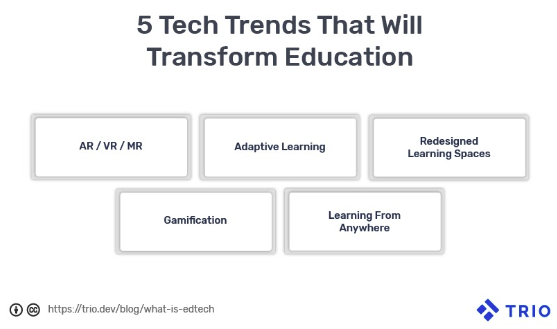
AR / VR / MR: Will we be able to study in the metaverse?
Adaptive Learning: Will our learning adapt automatically according to my interest?
Redesigning Learning Spaces: How will classes change for us to better learn?
Gamification: How will we be rewarded for our effort?
Learning From Anywhere: Where is the most/best conducive location can we learn from?
Most of these trends are already in place in some way or another. We have seen that learning nowadays has already adopted a scalable or adaptive mode, where learners can learn at their own pace and in their own style, especially with unprecedented access to a 24/7 learning experience. IoT devices have effectively lifted the restrictions of needing to be present in a physical environment.
Through blended learning / flipped classroom learning, apps, cloud-enabled devices and tools are allowing learners and teachers to stay connected. Online access to learning is being enhanced with gamification of the learning experience, where learners can watch lessons at their own pace, use their class time to virtually meet their peers to collaborate and communicate, and upload their homework all remotely, while earning redeemable points for individual and group learning. Thus, it can help foster a self-learning environment, thus allowing the teachers to spend their time developing more personalised learning experiences, rather than learning administrative chores.
All the logs and entries from the learners can now allow the teachers to create highly individualised learning plans based on the learner’s learning style and offer a more personalised and comprehensive learning experience. With classroom management tools, the teachers can fully harness the power of technology (especially AI tools and ML tools) to manage their classes, auto-grade their learners from data metrics, and have a clearer picture of their learner’s progress all at their fingertips on commonly used communication apps on mobile.
Most importantly, we are able to lessen the burden of paper usage along with its associated manual processing, when we go digital; from printing notes and copies, to having to store and safeguard physical homework/assignments in a physical environment, we can store them instead as bytes in folders in the cloud.
What we at Sambaash feel about EdTech is...
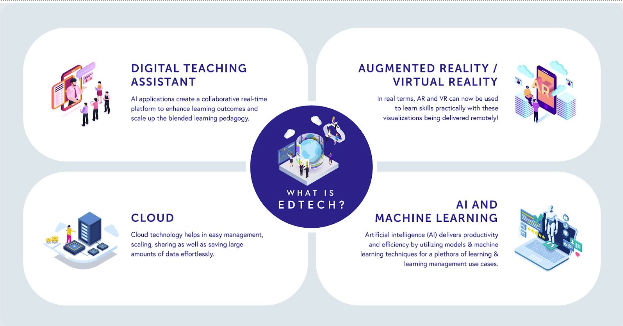
At Sambaash, we are working hard to incorporate and innovate some of these ideas into fruition. Our current suite of solutions has been geared towards the drive of ensuring a seamless journey for all the stakeholders, from learners to teachers, administrators to operational users in the institutions or corporations.
We have been developing modular solutions that are fully and securely integrated into the cloud, thereby allowing all users access easily. The integration of Machine Learning into our products also allows us to tailor the experience of every user.
To find out more about our solutions, simply click on ECLAIRS and the other products in our lineup. As an EdTech Enabler for the Future of Learning, we want to share more about what we are doing, and you can join us by sharing with us your insights and your thoughts too.

